Moderate solar activity continues – big sunspot delivers goodies
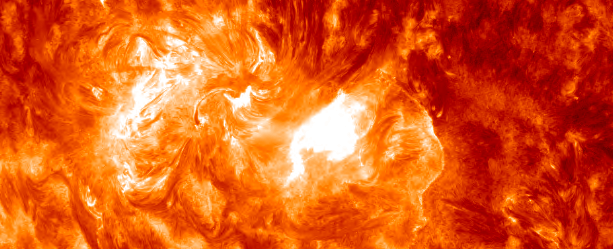
One of the biggest active regions of this solar cycle, AR 1944 (S08E38, Fkc/beta-gamma-delta), responsible for 6 M-class solar flares in last 4 days, is rotating into more geoeffective position.
The largest event it produced so far was a long duration, M4.0 solar flare observed at 19:46 UTC (January 4). Associated with this event were Type IV and 10cm (550 sfu) radio emissions.
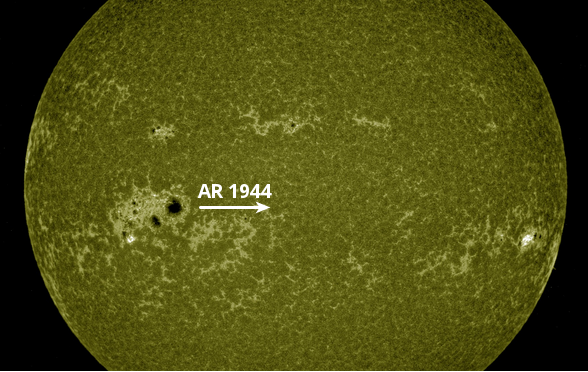
AR 1944 on January 5, 2014. Image credit: SDO / AIA 1600
As observed on GONG, GOES-15 SXI and SDO imagery, the bulk of the bright flare material originated from the extreme western edge of the large leader spot and extended in a westward direction out ahead of Region 1944.
At 04/21:48 UTC, SOHO/LASCO C2 imagery showed an asymmetric, full halo CME. Analysis suggested the CME may have an Earth-directed component and was moving around 800-1000 km/s.
A small filament eruption was visible in H-alpha movie loops at 03/16:39 UTC from the southeast quadrant, but subsequent STEREO-B coronagraph imagery showed the bulk of the ejecta is directed well south of the ecliptic.
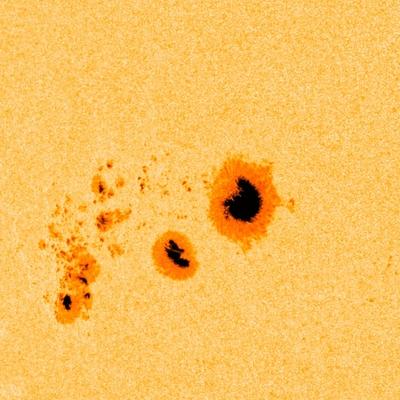 |
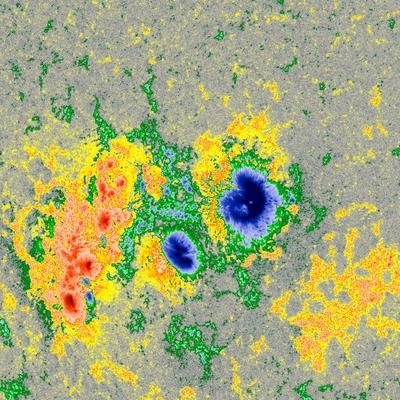 |
| AR 1944 (January 5, 2014) – SDO / HMI | Flare probabilities: X-class (19%), M-class (50%), C-class (53%) |
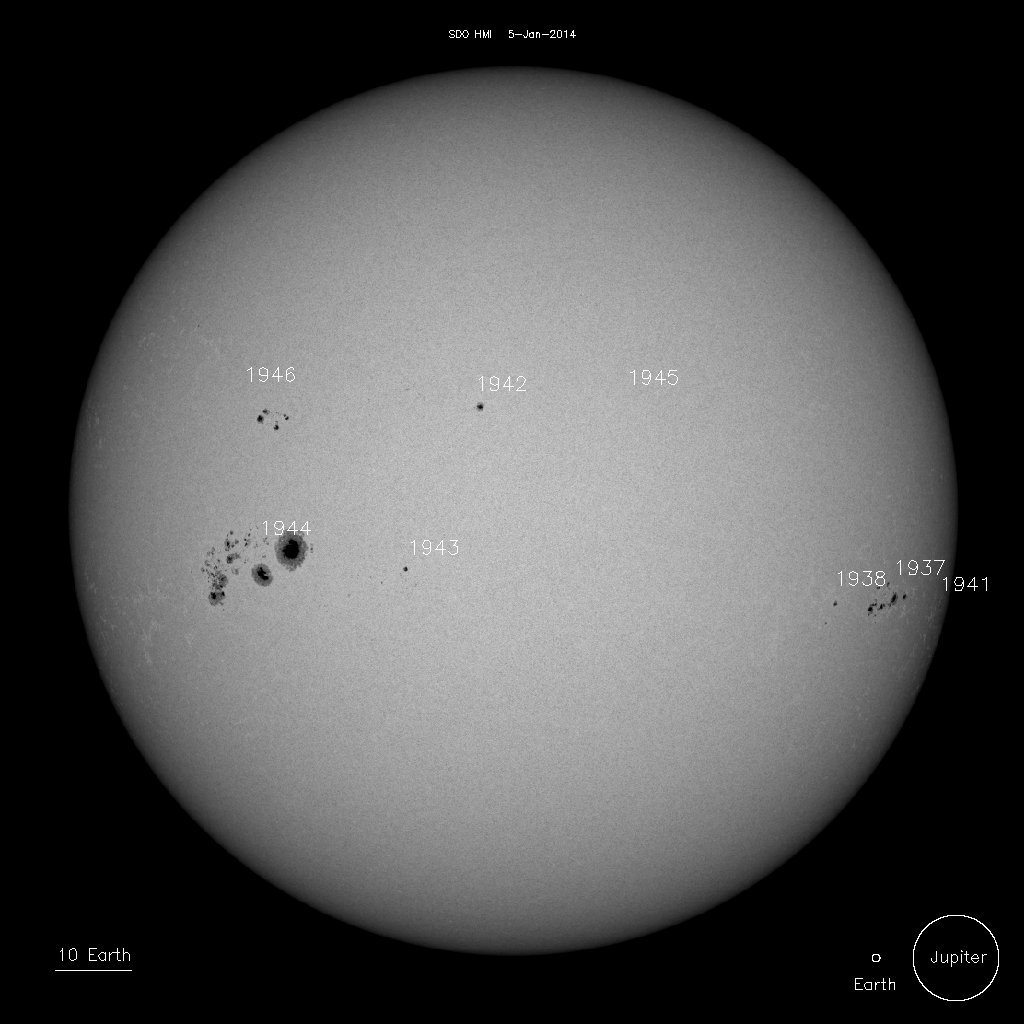
Sunspots on January 5, 2014. Image credit: SDO / HMI
1936 S15W90 227 60 3 HSX 2 A
1937 S12W58 195 80 6 DAC 14 BG
1938 S14W45 182 10 2 HRX 3 A
1940 S12W99 236 70 5 DAO 4 B
1941 S13W78 215 20 1 HRX 1 A
1942 N10E08 129 30 2 HSX 1 A
1943 S11E17 120 20 1 HRX 3 A
1944 S08E38 99 1470 20 FKC 60 BGD
1945 N11W12 149 10 1 AXX 2 A
1946 N12E41 96 10 3 BXO 2 B
Region 1936 (S15, L=232) produced a long duration M1 x-ray event observed off the west limb at 04/22:52 UTC. Associated with this event was a Type IV radio sweep. Region 1937 (S13W65, Dac/beta-gamma-delta) continued to grow, particularly in the intermediate-trailer portions of the region. New Region 1946 (N09E28, Dai/beta) emerged on the disk as a simple bi-polar group and quickly grew. The remaining regions were quiet and stable.
Solar activity is expected to remain at moderate levels (R1-Minor to R2-Moderate) for the next three days (05 – 07 Jan) with a chance for X-class (R3-Strong) flares from active Region 1944.
Yesterday, solar wind speed at the ACE spacecraft slowly declined to end near 450 km/s, signaling the end of the high speed stream. ACE remained in a positive solar sector under benign magnetic conditions. Bt remained at or below 5 nT and Bz never dropped below -5 nT.
The solar wind environment may reflect the arrival of a shock and CME on January 7. (Data and analysis source: SWPC)
Forecasters estimated there are 75% chance for M-class, and 30% chance for X-class solar flare in next three days.
Daisuke Tomiyasu took this image of huge AR 1944 from Higashinada-ku, Kobe, Hyogo, Japan on January 4:

Taken by Daisuke Tomiyasu on January 4, 2014 Via SpaceWeather
Featured image: SDO AIA 304

oh wolf! 🙂 (one day it will be THE BIG ONE, may be this time, just may be!)